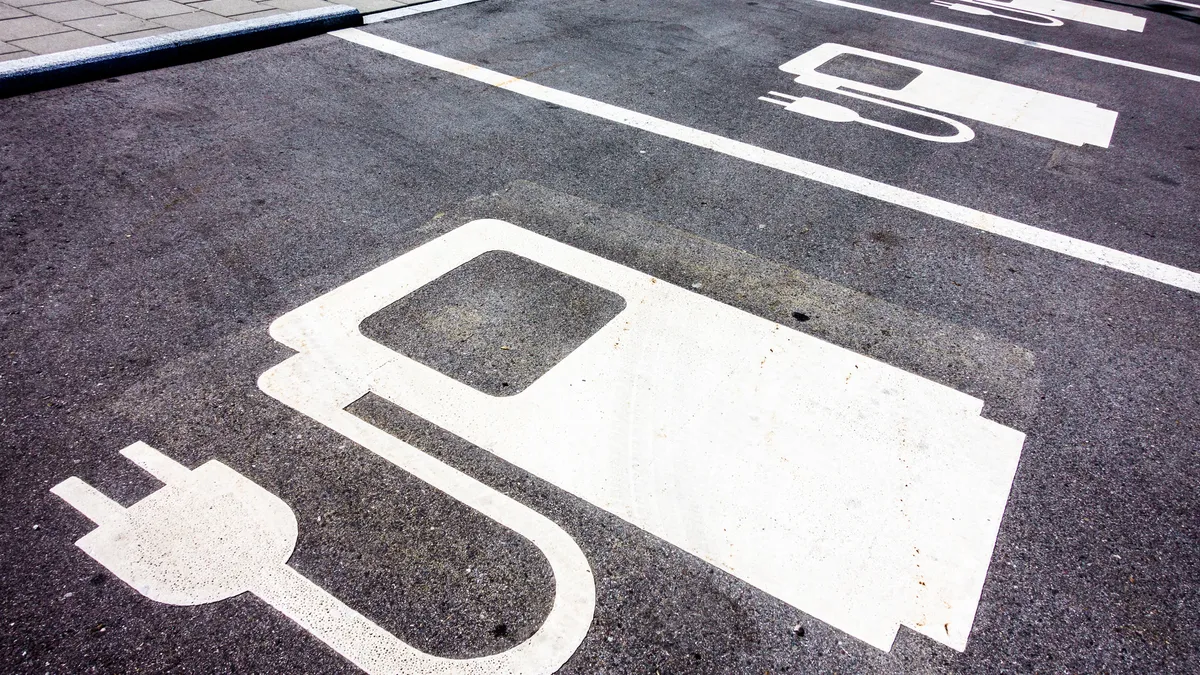Municipalities face a dilemma when it comes to their transportation electrification goals. Incentivizing citizens, businesses and fleet operators to purchase electric vehicles (EVs) requires robust public charging networks that include ample fast-charging options. But many municipal governments are wary of devoting the resources required to build out charging until more EVs are on the road.
The Charging and Fueling Infrastructure Discretionary Grant Program (CFI) provides a pool of funds that can help municipalities, and other eligible entities, scale-up charging networks to accelerate the transition to EVs. Created as part of 2022’s Bipartisan Infrastructure Law and administered by the U.S. Department of Transportation’s (DOT) Federal Highway Administration (FHWA), the program allocates $2.5 billion in funding to be dispersed over five years, which municipalities can apply for directly. This approach contrasts with the $5 billion in funding available through the National Electric Vehicle Infrastructure (NEVI) Program, which is open to private companies either in partnership (or not) with municipalities and other organizations.
Make your application stand out by knowing CFI’s rules and objectives
For municipal leaders, it’s important to understand that CFI is a competitive grant program. A thorough grasp of the goals and rules of the program will better position cities to receive a portion of this limited pool of funding. Half of the CFI funding is designated to build EV chargers and other alternative fueling stations along Alternative Fuel Corridors.
The other $1.25 billion is specifically designed to support communities that meet a range of requirements. “There is a heightened emphasis on rural communities, low-income communities and communities with high amounts of multifamily housing and/or low ratios of parking,” said Cory Bullis, public affairs director for FLO, a vertically integrated operator of one of the largest EV charging networks in North America.
The short and long-term value of working with a partner
Collaborating with an experienced EV charging partner not only improves the likelihood a municipality will land a CFI grant but also positions cities for success in achieving their goals for an expanded EV charging network.
One of the criteria FHWA officials will consider when evaluating CFI applications is how prepared a municipality is to use the funds effectively. Demonstrating preparation can be particularly helpful if city officials are in the early stages of pursuing transportation electrification.
“A lot of cities are overwhelmed with a technology that they are not familiar with,” said Brittani Gallagher, FLO’s national EV infrastructure program advisor. “To the extent that cities can work with an experienced partner to effectively plan and show that their project is shovel-ready, the more compelling it’s going to be. It also helps if you do community outreach ahead of time and can showcase that the community wants this.
Emphasizing uptime, inclusion and the needs of future EV driver
A major obstacle to transportation electrification is the fact that too many chargers don’t work when EVs arrive. The importance of reliability is one reason why CFI and NEVI require each charging port to maintain 97 percent uptime. While many EV charging companies pushed back against this requirement, 97 percent uptime should be a worst-case scenario for reliability. “It’s a floor, not a ceiling,” Gallagher said.
Working with a partner with a track record of consistently exceeding 97 percent uptime positions a municipality to secure CFI funding and to alleviate the strain on city resources once the chargers are operational. “Every time a charger breaks, what does that mean?” Bullis said. “You’re spending staff time and resources to go investigate and troubleshoot and that all has a cost. The less that happens, the more money you save and the more you convince people to switch to EVs.”
Partnering with a vertically integrated company that produces highly reliable chargers limits the need to expend limited municipal resources on operations and maintenance. For example, when there is a problem with a charger, it can sometimes be difficult to determine whether it’s the result of a hardware or software issue. If a municipality is working with several suppliers, it takes time to diagnose the source of the problem and then get the vendor to fix it. By contrast, a vertically integrated partner is accountable for all maintenance issues, which reduces response times and maximizes uptime.
Municipalities looking to differentiate their CFI funding applications should also prioritize inclusivity. This can include the location and design of chargers. “We’ve also spoken with thousands of drivers about their concerns about EV charging, and we often hear that fast charging stations are difficult to use because of how heavy the cables are. We also hear a lot of concerns about the fact that charging stations are often tucked away in dark parking lots,” Gallagher said.
In response to that feedback, FLO developed the FLO Ultra™ fast charger. Besides offering a 500-kilowatt charge in a modular configuration, the FLO Ultra™ charger is five-feet-tall and includes a canopy with built-in lighting. Active cable management makes it easy for drivers with disabilities – or anyone who struggles with heavy cables – to plug-in and unplug from the charger.
Municipalities should also consider chargers designed to serve SUVs and large medium and heavy-duty vehicles pulling trailers. Chargers, like the FLO Ultra™, were designed to serve this increasingly popular class of EVs. “If the city or municipality chooses a vendor able to accommodate that type of pull through spot, they'll be able to future proof their investment to accommodate the newer vehicles and models that are coming to market,” Gallagher said.










